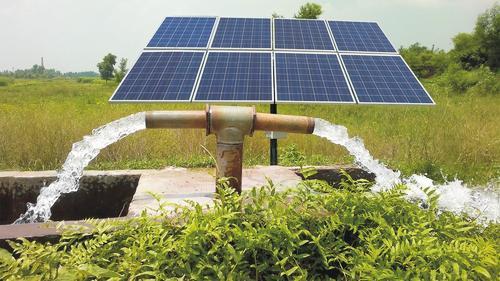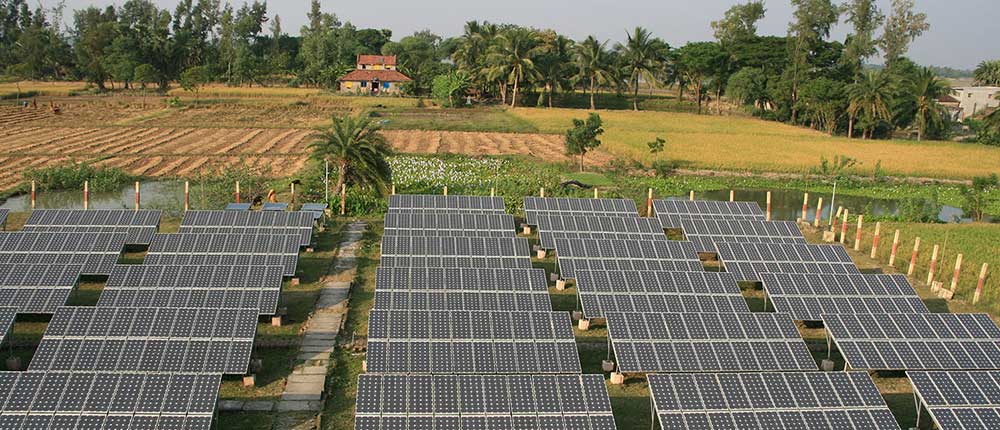Agriculture is a major contributor to the global economy, but it also has a significant impact on the environment. Energy consumption is a significant part of this impact, as traditional sources of energy such as fossil fuels are finite and have a negative impact on the environment.
To address this challenge, many farmers are turning to renewable energy sources, such as solar and wind power, to meet their energy needs. We will also explore the latest technologies and techniques used in renewable energy production, and the challenges and opportunities facing the adoption of renewable energy in agriculture.
Why Use Renewable Energy in Agriculture?
There are several reasons why farmers are turning to renewable energy, including economic savings, environmental sustainability, and energy security. Renewable energy sources, such as solar and wind power, are typically less expensive than traditional energy sources, providing farmers with a cost-effective way to meet their energy needs.

In addition to economic benefits, renewable energy is also more environmentally sustainable than traditional energy sources. Renewable energy sources produce little or no greenhouse gas emissions, reducing their impact on the environment and helping to mitigate the effects of climate change.
Finally, renewable energy can provide farmers with greater energy security. By generating their own energy on-site, farmers are less dependent on the traditional energy grid, reducing their vulnerability to energy shortages and power outages.
Technologies and Techniques Used in Renewable Energy Production
There are a variety of renewable energy technologies and techniques used in agriculture, including solar, wind, and biogas.
Solar energy is a popular renewable energy source in agriculture, as it is abundant and readily available. Solar panels can be installed on farms to generate electricity, and farmers can also use solar pumps to power irrigation systems, reducing their dependence on traditional energy sources.
Wind energy is also a popular renewable energy source in agriculture, particularly in areas with high wind speeds. Wind turbines can be installed on farms to generate electricity, and farmers can also use wind pumps to power irrigation systems, reducing their energy costs and environmental impact.
Biogas is another renewable energy source that is gaining popularity in agriculture. Biogas is produced by the decomposition of organic matter, such as animal waste, and can be used to generate electricity and heat. Biogas systems can also help to reduce waste on farms, improving the overall sustainability of agricultural operations.
The Benefits of Renewable Energy in Agriculture
The use of renewable energy in agriculture provides farmers with a number of benefits, including economic savings, environmental sustainability, and energy security. By generating their own energy on-site, farmers can reduce their dependence on traditional energy sources, reducing their energy costs and improving their bottom line.
In addition to economic benefits, renewable energy is also more environmentally sustainable than traditional energy sources. Renewable energy sources produce little or no greenhouse gas emissions, reducing their impact on the environment and helping to mitigate the effects of climate change.
Finally, renewable energy can provide farmers with greater energy security. By generating their own energy on-site, farmers are less dependent on the traditional energy grid, reducing their vulnerability to energy shortages and power outages.
Challenges and Opportunities in the Adoption of Renewable Energy in Agriculture
While the use of renewable energy in agriculture offers many benefits, there are also challenges and opportunities that must be considered. One of the main challenges is the upfront cost of renewable energy systems, which can be a barrier to adoption for many farmers.

However, there are also opportunities to overcome these challenges. Governments and private organizations can provide financial incentives and subsidies to help farmers adopt renewable energy systems, reducing the financial burden and increasing the uptake of renewable energy.
Additionally, technological advancements are making renewable energy systems more affordable and accessible, making it easier for farmers to switch to renewable energy. Another challenge is the lack of infrastructure and support systems for renewable energy in many rural areas.
This can make it difficult for farmers to access and utilize renewable energy systems, even if they are willing and interested in doing so. To address this challenge, governments, and private organizations can invest in the development of renewable energy infrastructure, making it easier for farmers to adopt renewable energy.
Conclusion
The use of renewable energy in agriculture is an important step towards a more sustainable and secure future for farmers and the environment. With the benefits of economic savings, environmental sustainability, and energy security, renewable energy provides farmers with a cost-effective and sustainable alternative to traditional energy sources.
By overcoming the challenges and seizing the opportunities in the adoption of renewable energy, farmers can help to create a more sustainable future for agriculture and the environment.
With continued investment and support, renewable energy has the potential to play a major role in the future of agriculture, helping to create a more sustainable, secure, and profitable future for farmers and the planet.









